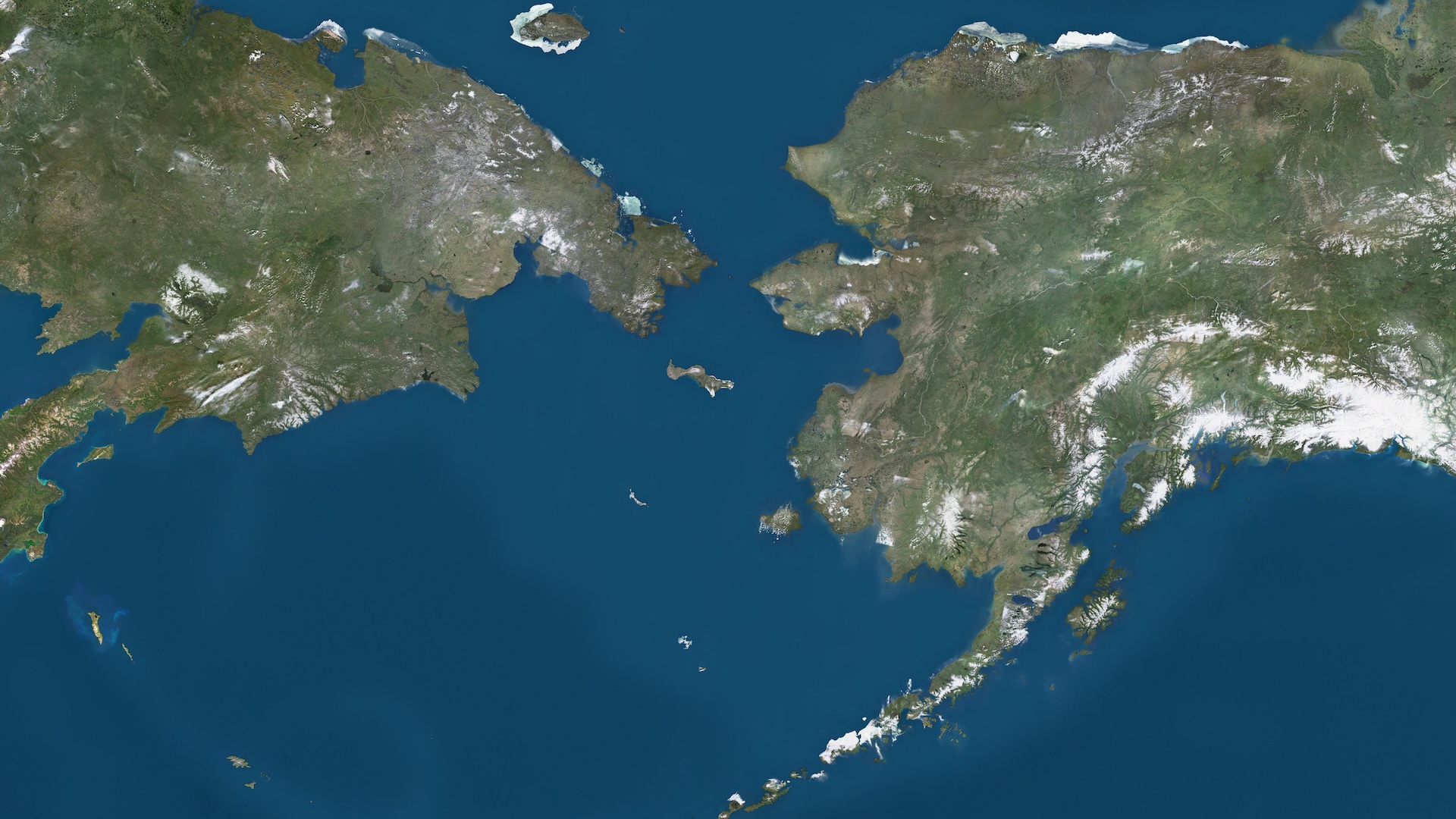Bering Land Bridge emerged much later than we thought it did, new study finds
The Bering Land Bridge likely didn't emerge until around 35,000 years ago, much later than was previously thought. This narrows the window of when humans could have crossed over to North America.

The Bering Land Bridge that once connected Asia and Alaska may have emerged much later during the last ice age than previously thought, narrowing the window of time during which humans could have migrated to the Americas, increasing evidence suggests.
The land bridge likely existed about 35,000 years ago, before the coldest part of the last ice age, known as the last glacial maximum (LGM), a new study finds. This jibes with one of the oldest reputably dated sites of human activity in the Americas — the 23,000-year-old footprints found at White Sands National Park in New Mexico.
The finding "suggests that humans inhabited the land bridge region soon after it was exposed," the researchers wrote in the study, which was published in the September issue of the journal Quaternary Science Advances.
Ice age cycles
Earth regularly undergoes cycles in which more or less ice covers the world's surface. At the height of each glacial period, global sea levels drop as the planet's water becomes frozen in massive ice sheets. At the end of these icy times, as temperatures rise, the ice sheets melt and sea levels rise.
Previous research found that at LGM, the Bering Land Bridge let animals such as mammoths and horses roam between Asia and the Americas. A better understanding of when this land bridge was most recently above sea level might help shed light on when and how humans first migrated to the New World.
Prior work suggested that global sea levels were about 425 feet (130 meters) lower at the LGM between 26,500 and 19,000 years ago, Jesse Farmer, an assistant professor in the School for the Environment at the University of Massachusetts Boston and a co-author of a new study on the land bridge, told Live Science. This had led scientists to estimate that the Bering Land Bridge was above sea level starting about 70,000 years ago, he noted.
However, there were two indications that perhaps there was still more to the full picture of the Bering Land Bridge. First, "it's not possible to know sea levels very precisely from that time," Farmer said. "With our existing tools, an uncertainty of about 10 to 20 meters (33 to 66 feet) would be very good."
Get the world’s most fascinating discoveries delivered straight to your inbox.
Second, "in this case, we're not concerned with the global average, but specifically the Bering Strait," Farmer said. High latitudes, such as where the Bering Strait is located, were relatively close to where the ice sheets would have been growing. The weight of the ice would have pressed down on the land, raising the local sea level.
Indeed, in a 2023 PNAS paper, Farmer and his colleagues revealed that the Bering Land Bridge might actually have been flooded from between 46,000 years ago and 35,700 years ago, meaning that it wasn't exposed for land crossings until after that. Ocean sediment data suggested that nutrients typical of the Pacific Ocean began intruding into the Arctic Ocean during that time, with the most likely explanation that the Bering Strait was open then.
Those findings suggested that the Bering Land Bridge might only have reopened about 10,000 years before the height of the last ice age, significantly later than previously thought. One question this helps address is which human lineages — ours or our extinct relatives — could have made the journey to the New World.
"The late emergence would support the idea that fully modern humans first made the journey onto the North American continent," Ian Buvit, an independent archaeologist who did not take part in this research, told Live Science. "Neanderthals and Denisovans, the other two hominids known to have occupied parts of Siberia, were already extinct, or on the verge of extinction, throughout northeastern Asia by this time."
In addition, analyses of fossils of ancient animals up to about 46,000 years old in both Eurasia and the Americas, such as mammoths, bison, lions and bears, supported the possibility that the Bering Land Bridge was open later than previously thought — much closer to the LGM. Computer models of the migrations of these creatures based on the fossil deposits suggested that the land bridge was closed during the span the 2023 paper suggested it was.
"You have two completely different data sets telling the same story," Farmer said.
Although the Bering Land Bridge might not have opened until later than previously thought, Farmer noted that the seafaring knowledge displayed by the ancestors of the modern Inuit suggested that it was still possible ancient humans could have made their way to the Americas by boat, just as ancient humans migrated across the sea to Australia and New Guinea.
"Any human migration into the Americas before 40,000 to 35,000 years ago would have required watercraft and the ability to navigate open ocean," Buvit said. "As far as we know, this was only achieved by anatomically modern humans."

You must confirm your public display name before commenting
Please logout and then login again, you will then be prompted to enter your display name.
